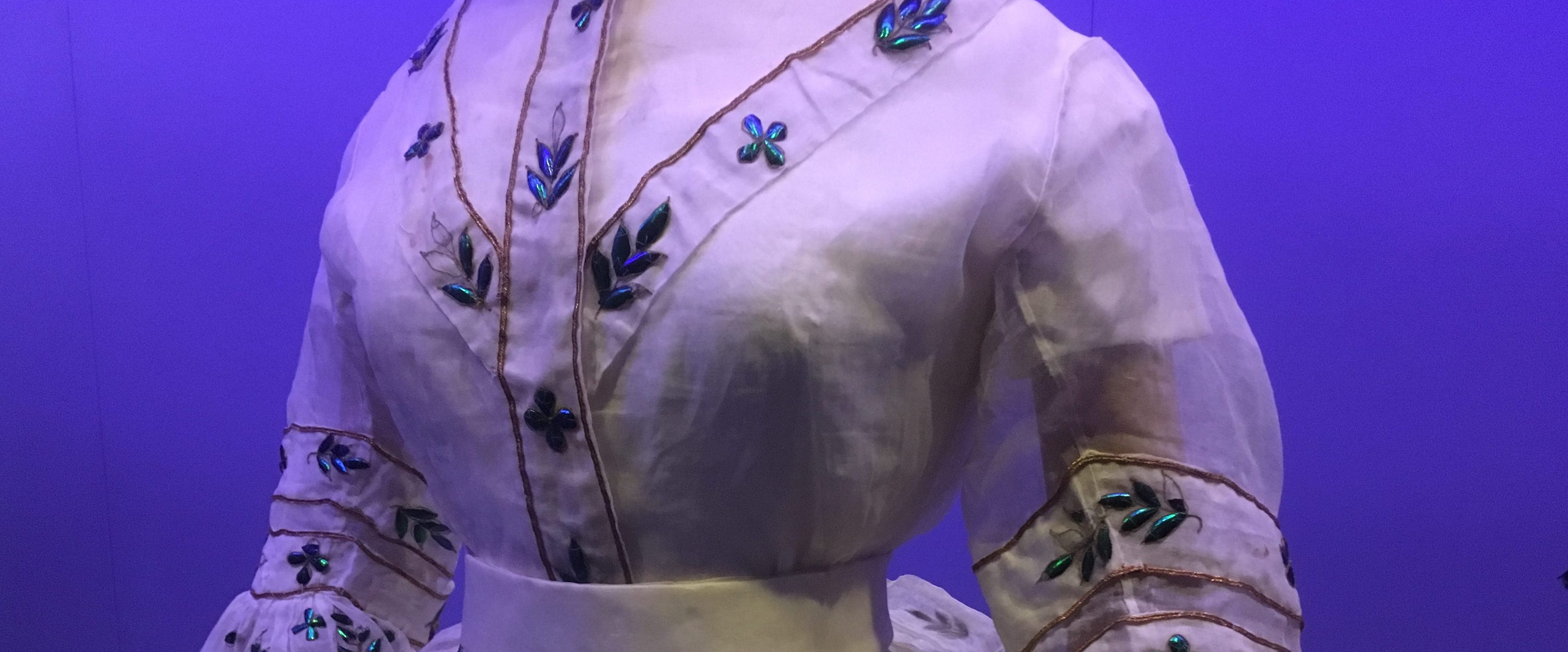Taken from Shakespeare’s Merry Wives of Windsor, the phrase The World is your Oyster suggests that if you have the money or opportunity, you can have what you want.
For too long, this is exactly what has happened in the world of fashion. It’s a story powerfully presented in the V&A exhibition Fashioned by Nature. Since the 1600s, the world has been the plundering ground of Europeans looking to track down the finest materials to clothe and titillate those who could afford them.
This remarkable exhibition, exploring the relationship between fashion and nature, features a plethora of garments and accessories made from exotic materials acquired from all parts of the world and brought over to Europe, often to London, an important trading hub and of course central to the British Empire.
Among the most breathtaking exhibits is a white dress with a floral design, pictured above, which appears to be embroidered with green silk. On closer inspection, the flowers are made of beetle wings. As many as 5000 iridescent beetle wings went into the making of the dress dating back from the early 1900s!
A strong reaction against such depredations began earlier than I had appreciated. For instance, the Society for the Protection of Birds, later to become the RSPB, was founded in 1891 to try and stop or limit the capture of exotic birds whose feathers were being taken for extravagant hats, fans or other fashionable items. Not long afterwards, 1911, there was legislation to protect fur-bearing animals.
If you think that concentrating our efforts on the production of fabric in this country rather than overseas was more sustainable and not damaging to Nature, think again. In the early days of mass clothes production, exposure to fumes from dyes and fixing agents made workers and neighbouring residents extremely sick.
Using British sheep for their wool would have been a positive step, but in the early days, the process of turning the wool into cloth introduced unpleasant waste into the river system. Progress often seemed to be undermined by some unforeseen by-product which was damaging to the environment. Given my profession, I was interested but horrified in the exhibits that contained the jaw bone of whales. Some species of whales were killed in the 18th and 19th centuries for their upper jaws. Keratinous plates from their jaws were cut to make baleen, strips of flexible materials used to stiffen skirts or shape hats. Needless to say, as a result of this practice, the whales were over-hunted and their populations dramatically reduced.
Although this exhibition ends this month, its impact endures. It has made me realise the world is not there for the taking, it’s not ‘your’ or ‘my’ oyster. Even if it is a proverb, we should ban this phrase because it endows a sense of entitlement. Conversely, we all need to work together to preserve what we have left of the World. One of the slogans displayed at the exhibition was “Mend more, bin less” and this is a New Year’s resolution I am more than happy to embrace.













